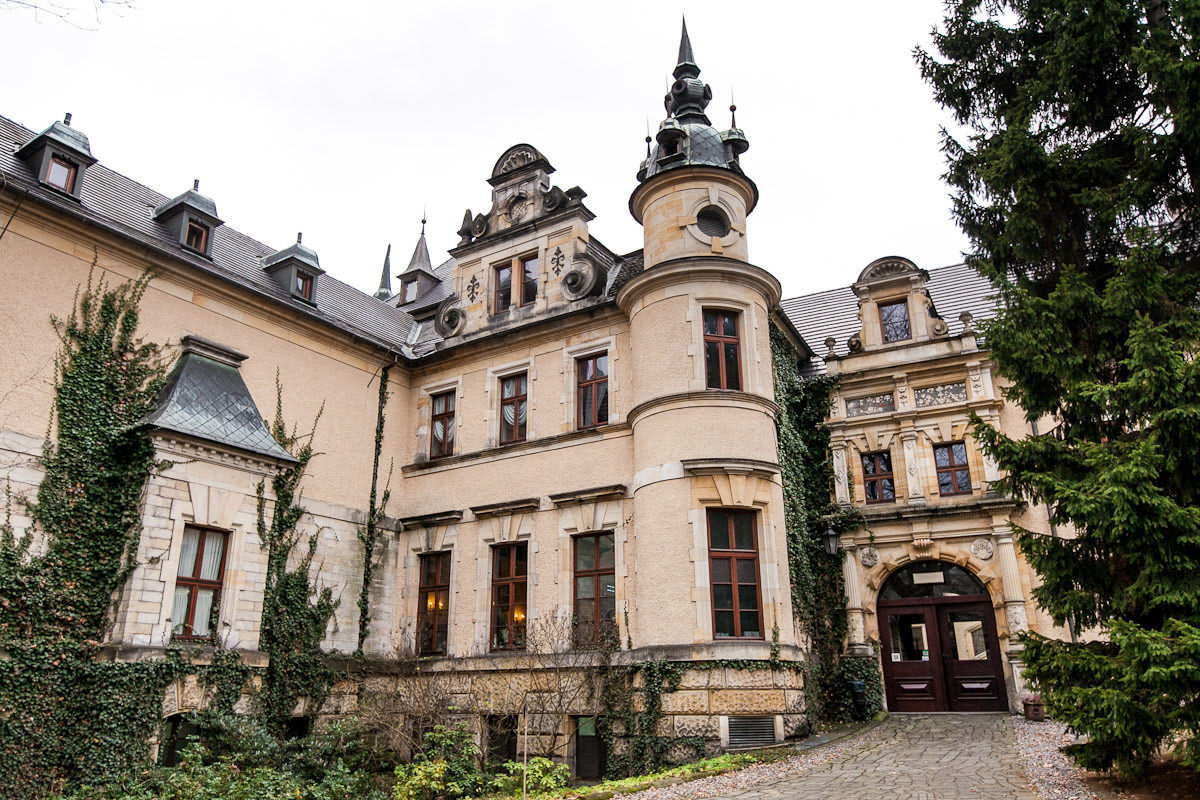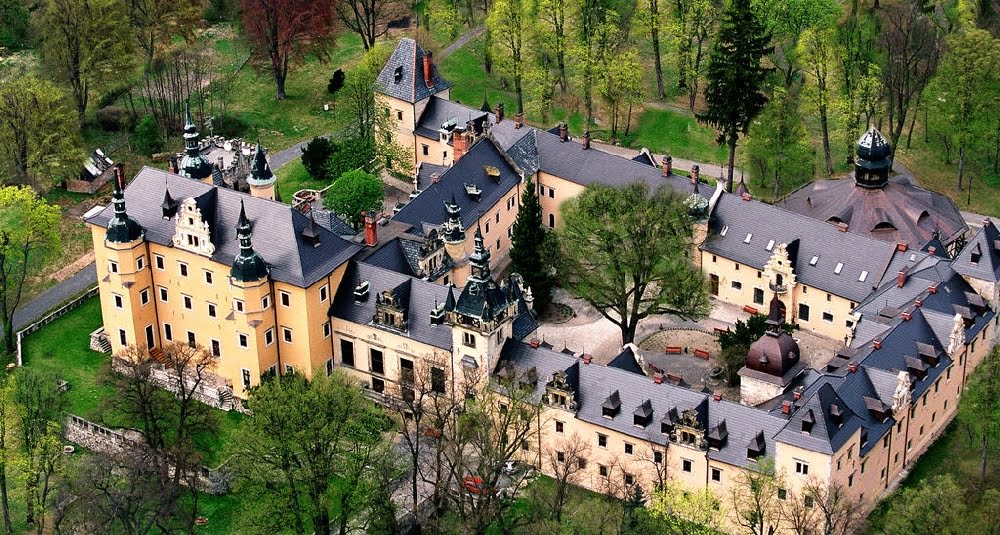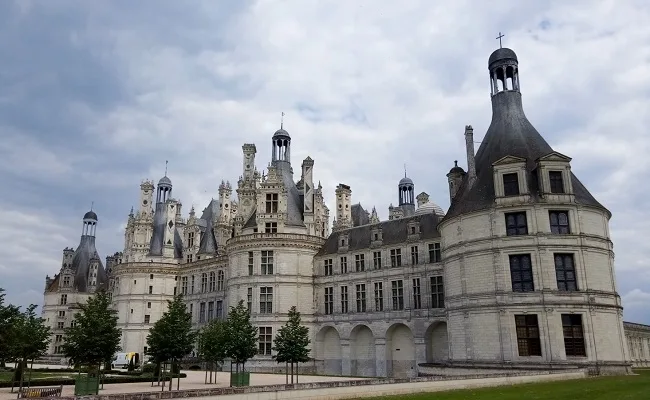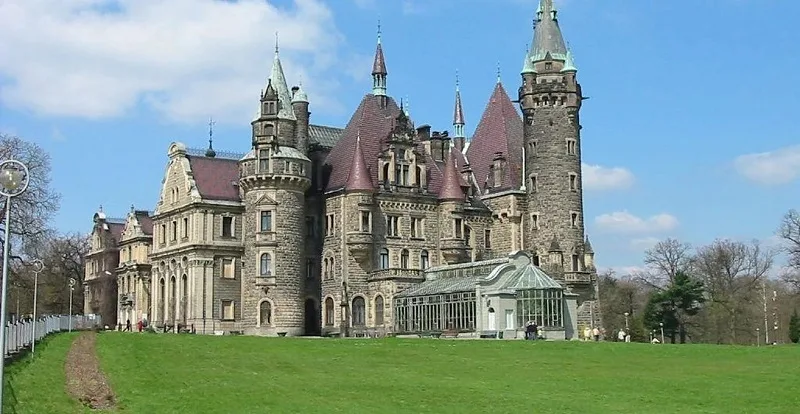
Klitschków Castle
Klitschków Castle is a “delicious highlight” among Poland’s many castles. It surpasses its counterparts in design, quality of construction, legend and historical significance. The lush forests of Lower Silesia extend around the building. The castle is called a wonder of architecture. Besides the forests, the building is adjoined by a luxurious park. Medieval knightly tournaments are held there.
History of Klíčkův Castle
The first building on the territory appeared in 1297. It was a border fortress made of stone and wood. It was situated on a slope near the Kvisa river. The construction was done by prince Bolko I Severový of Javornitsa. The location for the fortress was chosen for a reason. Thanks to it, the army was able to quickly cope with Bohemian raids.
Towards the end of the 14th century the fortress ceased to fulfil its defensive function. With the death of its masters and subsequent loss of independence of the Duchy of Świdnicko- Jawor, the land became a part of the Czech Kingdom. Queen Anne became the ruler of the land and inherited it. Prior to her, the castle had been acquired by Baron Heinrich von Rechenberg in 1391.
The new rulers of the castle were the first to rebuild it considerably after the prince’s death. The castle grew from a dismal and dark fortress into a grandiose residence with rich decoration and an imposing square. Changes were made over a period of about three centuries, finally making the castle a royal retreat.
The last and, according to some historians, the most significant alterations were those that took place in the second half of the 16th century. The castle was inherited by Caspar von Rechenberg the Younger. He was the tenth child of the family. He was distinguished by his dignified education, as well as by his impressive wealth. He completed the conversion of the castle, which was started under his brother.
In 1585 he saw a Renaissance stone building. Its area was almost twice as big as its predecessor. It had 2 ballrooms, 20 bedrooms, chapel, reception hall, state rooms, and 2 courtyards. Outbuildings were located near the building. The church of the Three Magi (Three Kings) attracted special attention.

How the castle changed during the war periods
The first significant difficulties came at the start of the Thirty Years War. First a tax of 80 000 tolars was levied, then troops of the imperial aria were stationed on the castle on two occasions. The castle was commanded by Albrecht von Wallenstein, who openly allowed his men to pillage and loot. Hans von Rehenberg, who owned the castle at the time, decides to sell it.
The sale transaction is concluded in 1631. The new owners are the von Schellendorf family. It belonged to several of their successive generations. In 1703 Maximilian von Schöllendorf dies and the estate is inherited by the von Frankenberg family, related to the court of the German Emperor Leopold I. Hans von Frankenberg was later awarded the title of Baron von Schoelendorf and the ownership of Klitschków.
The next attack came during the Napoleonic Wars. The French army completely looted the castle. But the structure remained intact. New changes took place in 1877, when the castle was managed by Count Friedrich zu Solms-Baruth. Heinrich, the Count’s son, ruled the castle during Nazi rule. He was on the side of the opposition and secret meetings were held at the manor.
Popular articles
-
 Beautiful and Exquisite Chambord Palace
Beautiful and Exquisite Chambord PalaceChambord Palace, known as Château de Chambord, in France, stands …
-
 Moszna Castle: A Journey Through Time and Elegance
Moszna Castle: A Journey Through Time and EleganceMoszna Castle, located in the picturesque region of Opole, Poland, …
-
 Exploring Conwy Castle: A Journey Through Time
Exploring Conwy Castle: A Journey Through TimeConwy Castle, a medieval masterpiece nestled in the heart of …
